The Southern Pacific Railroad Sacramento Shops were the largest and most comprehensive railroad heavy repair facilities in the Western United States. The unusually self-sufficient Sacramento Shops repaired locomotives and cars throughout its life and built new ones as late as 1937. These drawings and photos are of the paint shop. [1]
Click the link to return to the Southern Pacific Sacramento Shops Main Page
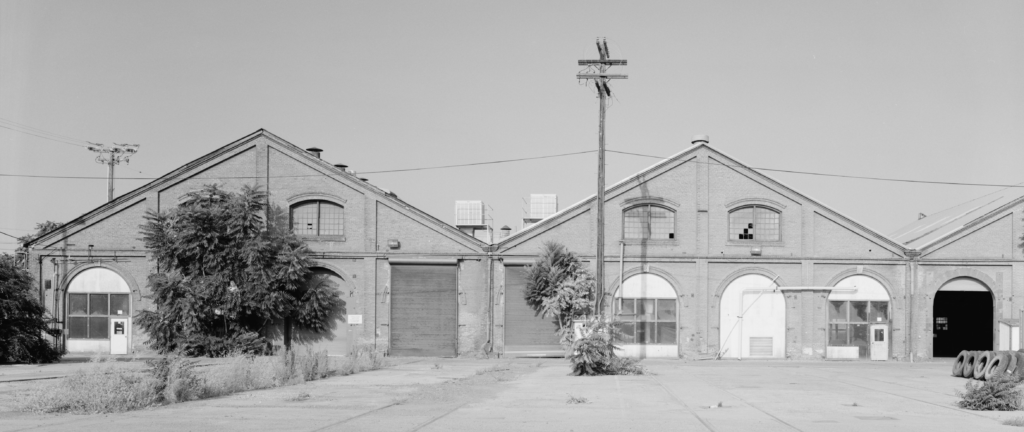
By 1872, shop managers at Southern Pacific’s Sacramento Shops realized that more space was needed for painting than was available in the wing of the planing mill that was being used at the time. [2]
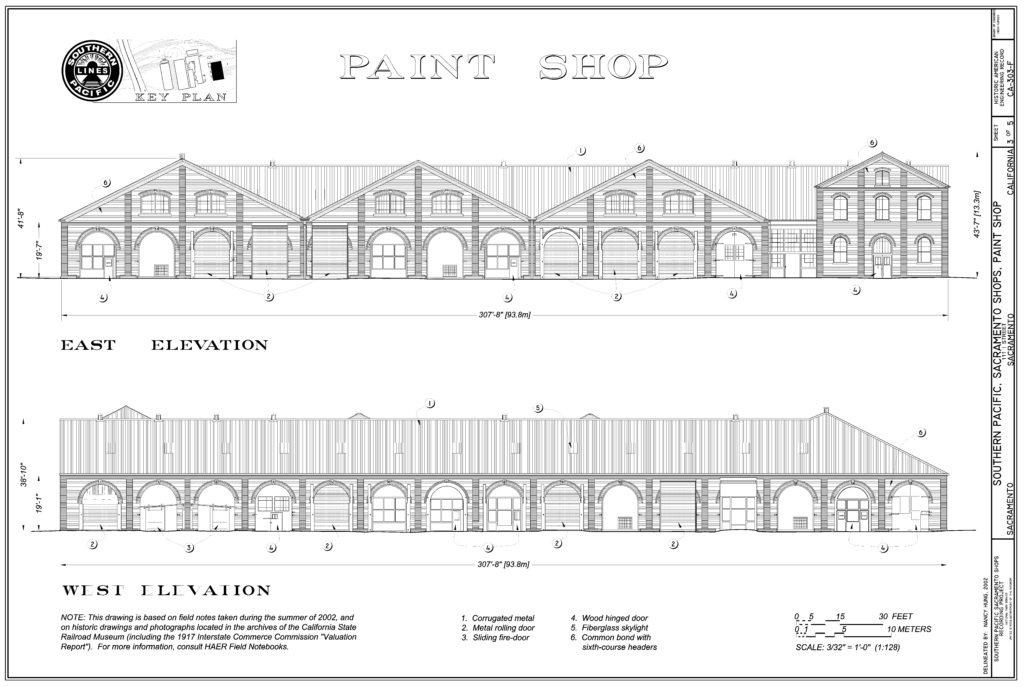
A new building was erected to the east of Car Shop No. 3 aligned parallel to it. The main building was 70 by 265 feet, with five parallel wings on the east side, each 70 by 20 feet. A two story office used a 20 by 44 foot space in the northeast corner.
The building was constructed of brick with a corrugated meal roof supported by wood trusses. Each bay had large windows and doors to provide natural light and ventilation. There were also skylights fitted to the roof for added light.
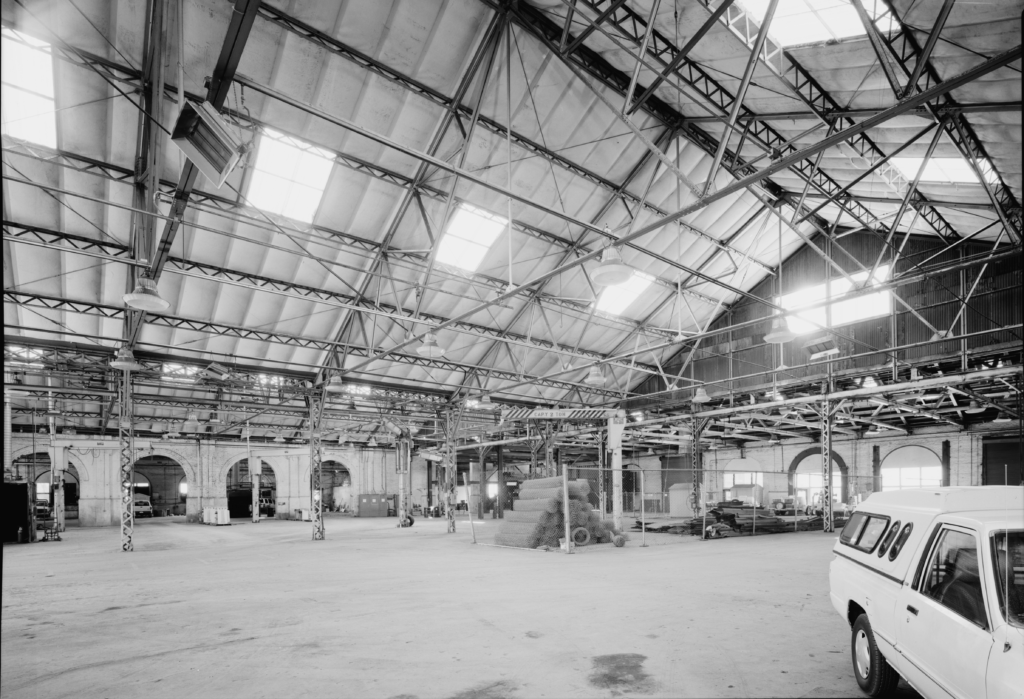
Unlike the other buildings, the paint shop did not require heavy machinery or power tools, so the building was located away from the central power house in a location that minimized smoke and dust from other shops which might otherwise affect the quality of the paint finish.
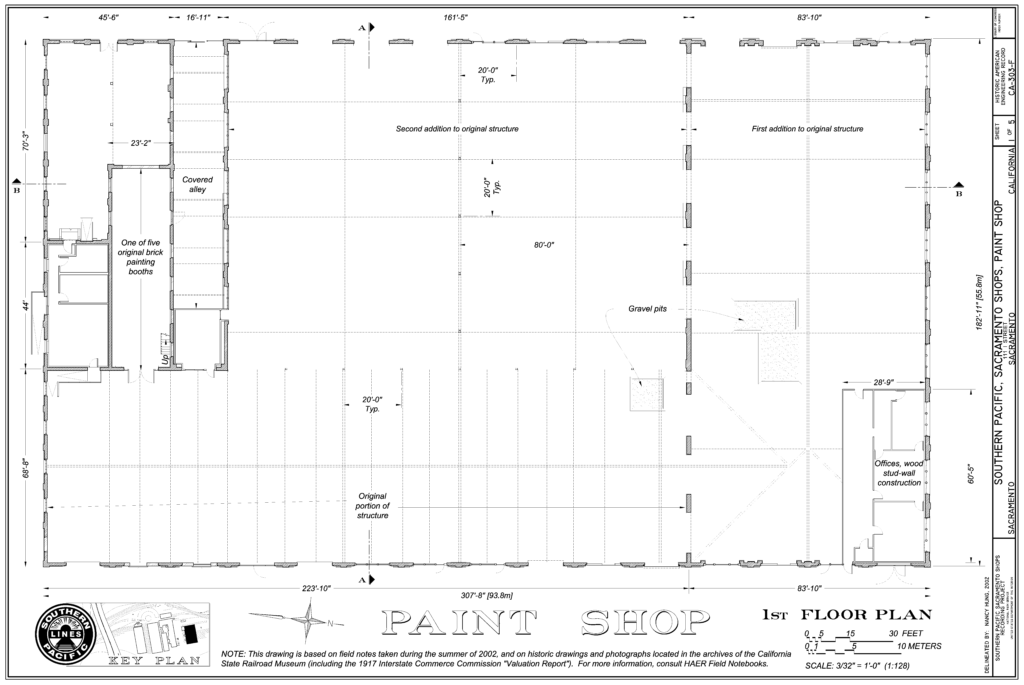
Rolling stock was moved from Car Shop No. 3 on a 68 by 265 foot transfer table. Cars entered from the west end of the building into one of five painting bays.
Between 1890 and 1892 an 84 by 183 foot addition was built on the south side to the east, requiring a 23 foot extension of the transfer table pit. Construction was the same, but with riveted steel trusses instead of wood.
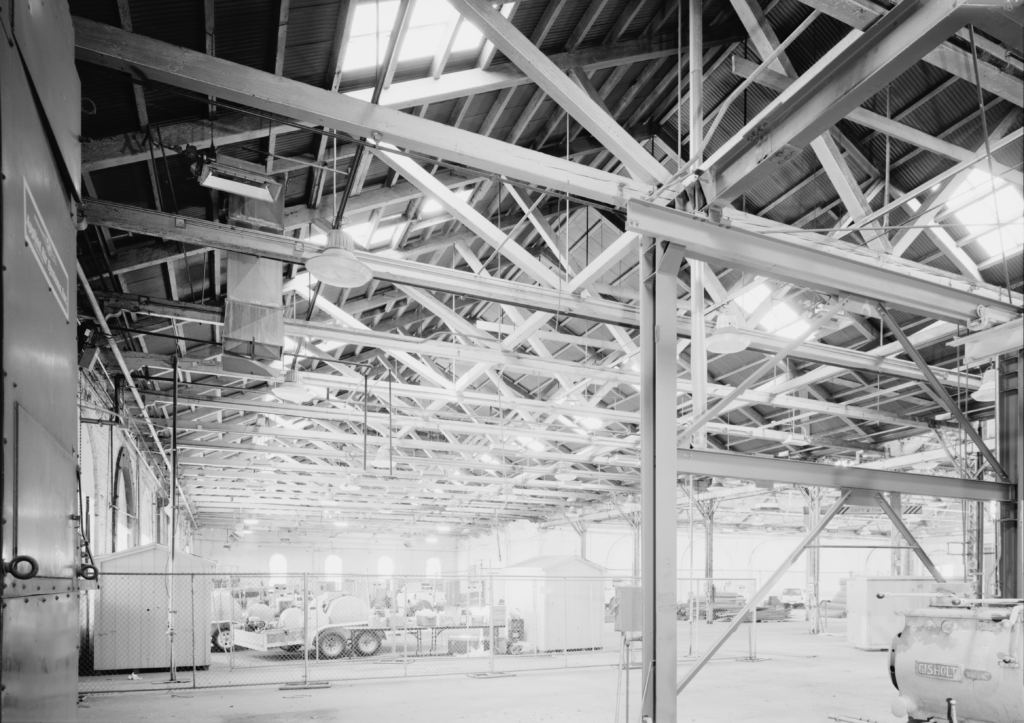
By the late 1890s the increasing length of passenger cars, and an increasing workload required a renovation of the paint shop. It was reconfigured to one large space that could hold eight passenger cars or a larger number of shorter freight cars. According to surviving records, between November of 1898 and June 1903, walls of the bays were replaced with steel columns, to reconfigure four of the five painting bays into a single 114 by 160 foot space spanned by two sets of 80 foot trusses. By 1917 an open alley just south of the one remaining bay was enclosed and roofed. The remaining bay became an office room.
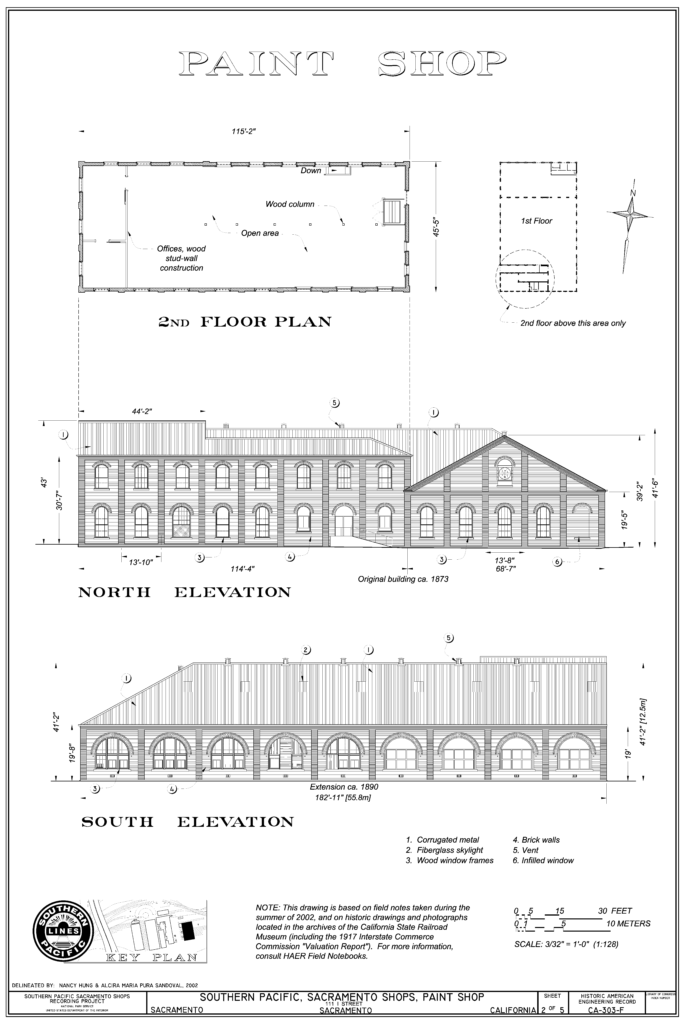
These renovations, with the addition of steel girders and mullions in place of load-bearing masonry walls, more than doubled workspace with eight covered tracks in place of the four in the original bays. This open design allowed for a wide range of work as the need arose. In the 1920s enough track had been added to provide space for 23 freight cars within the building.

After World War II the paint shop was partitioned to house other car repair activities. By 1946 it hosted a scrub room, lye pits, a rubber room, paint storage and mixing rooms, and a varnishing room The carpet shop moved into the second story of the old office area in the 1950s.

The paint shop gradually took on all passenger car repair jobs during the 1950s, turning out five cars that received heavy repairs and 25 cars that underwent light repairs per month.
The aging building began to require more maintenance, but the notoriously frugal Southern Pacific management performed minimal repairs on an as-needed basis rather than extensive renovations. As the rotting wood and rusting steel skylights failed, they were replaced with aluminum, and later, fiberglass panels. This led to a variety of skylight window designs on the corrugated steel roof.
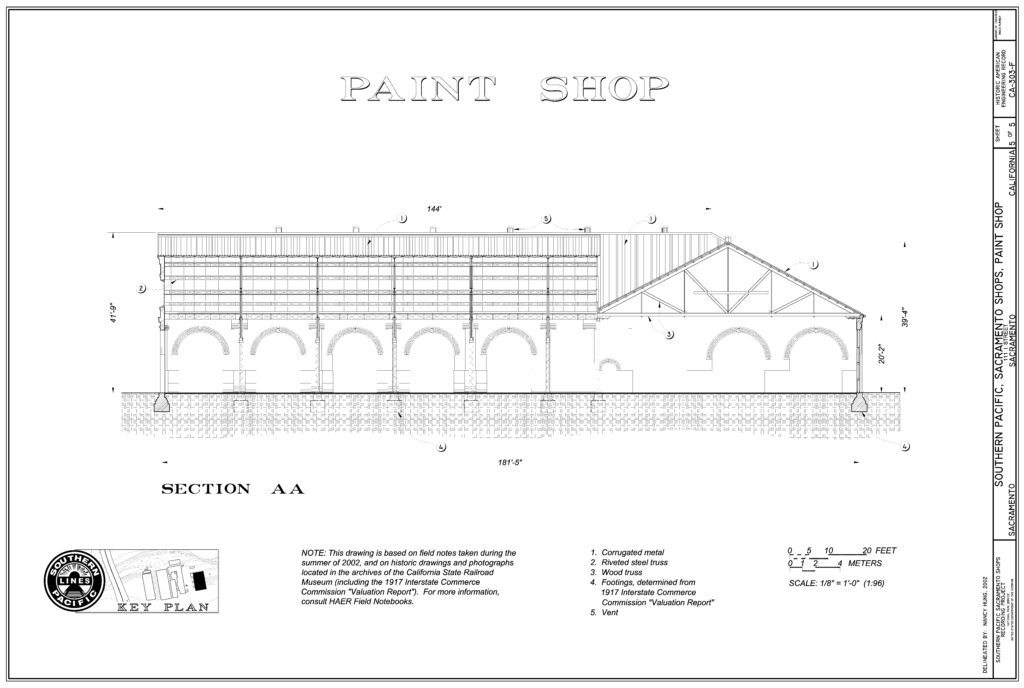
Around the 1971 creation of Amtrak, the Southern Pacific discontinued all passenger car maintenance, and the paint shop was reallocated for locomotive refurbishing work. This helped the paint shop survive to the closing of the Sacramento Shops in 1999.
[1] Historic American Engineering Record Survey HAER CA-303-F. This project, completed in 2001-2002 was prepared by historians Carolyn Dougherty, LeeAnn Bishop Lands, J. Lawrence Lee, and Camille Vicenti. Plans were delineated by Nancy Hung and Alcira Maria Pura Sandoval. Photos were made by Jet Lowe
[2] Historic American Engineering Record Survey HAER CA-303 Written Historical and Descriptive Data pp. 106-115 https://tile.loc.gov/storage-services/master/pnp/habshaer/ca/ca3100/ca3107/data/ca3107data.pdf accessed 06/01/2021